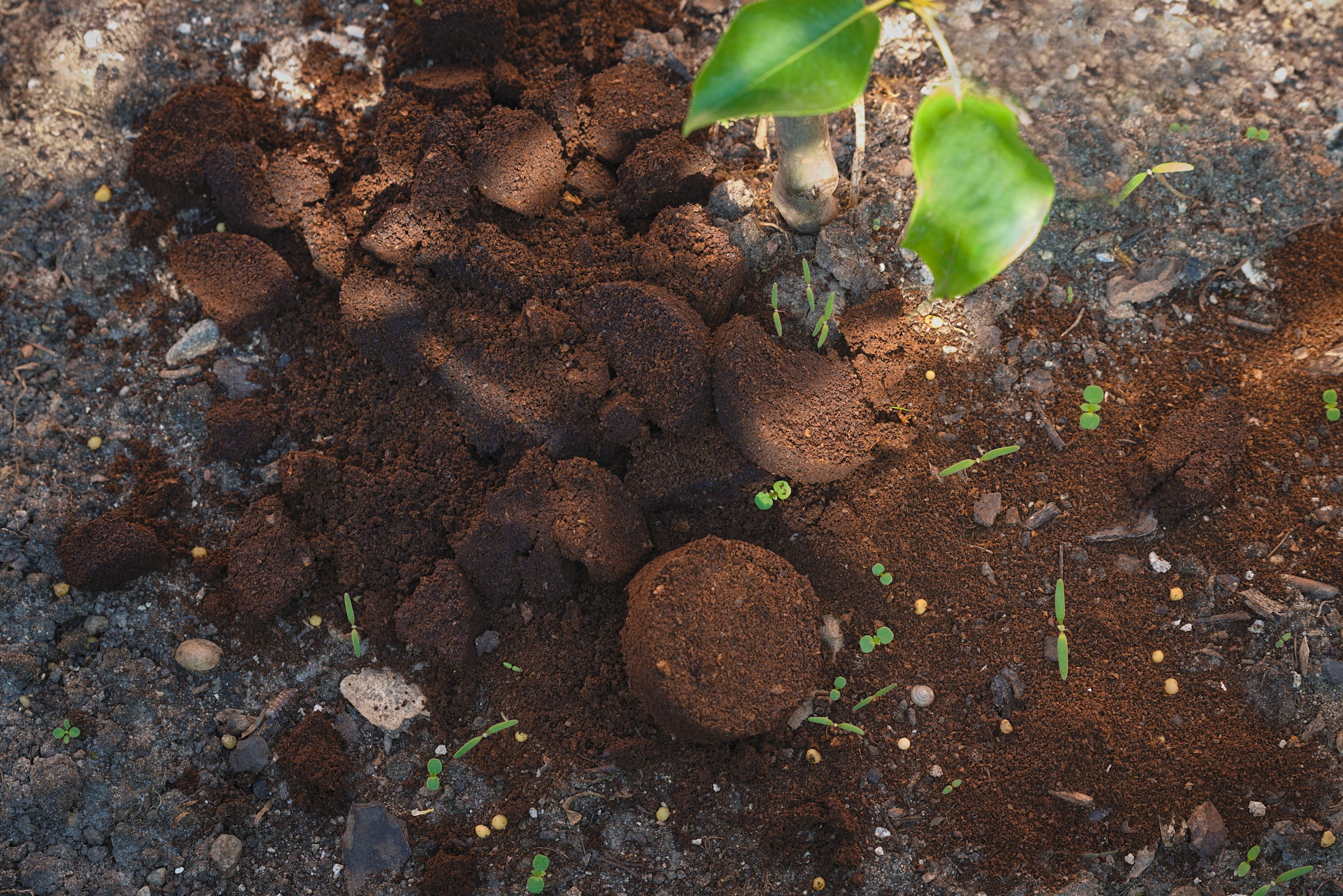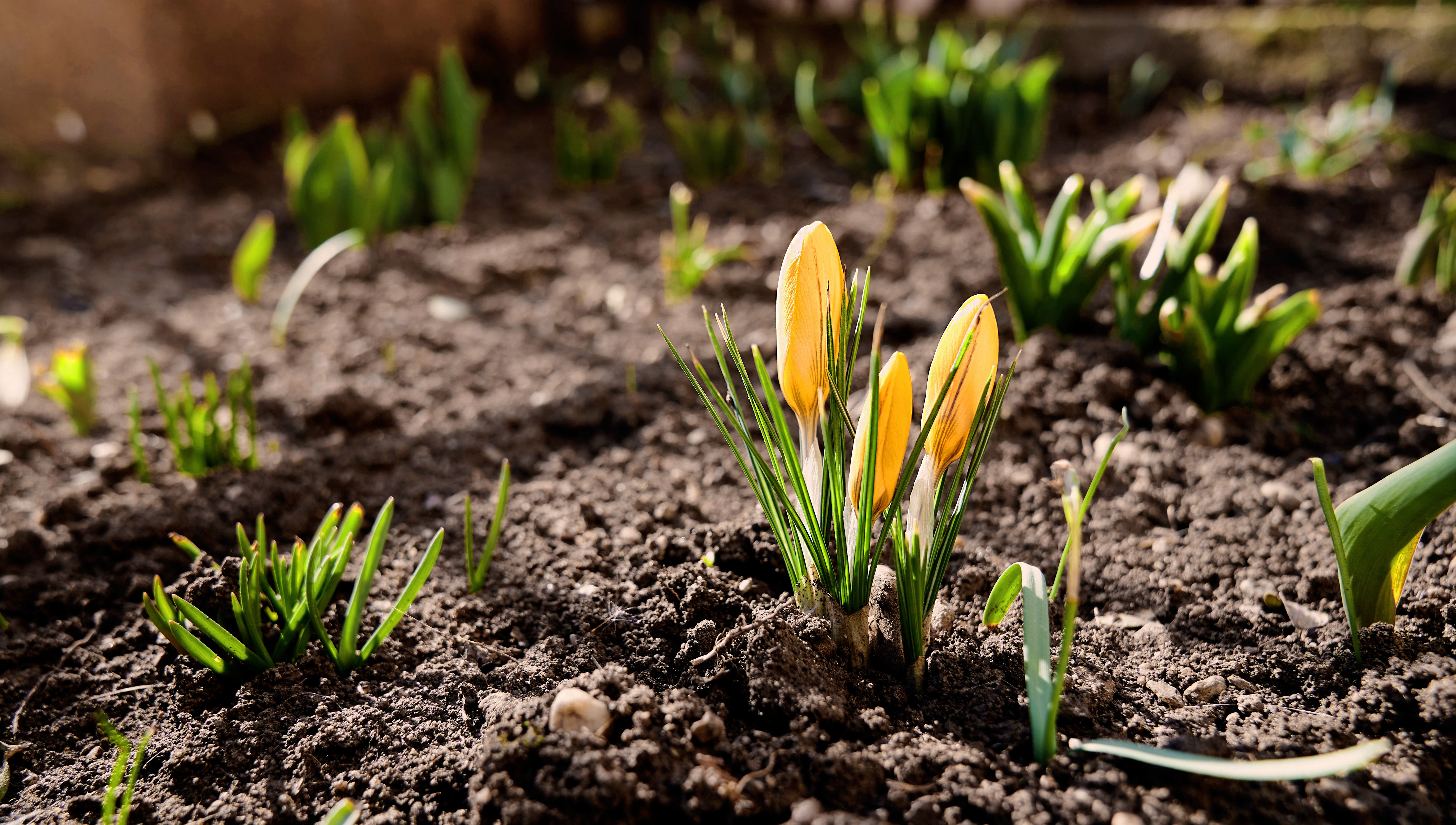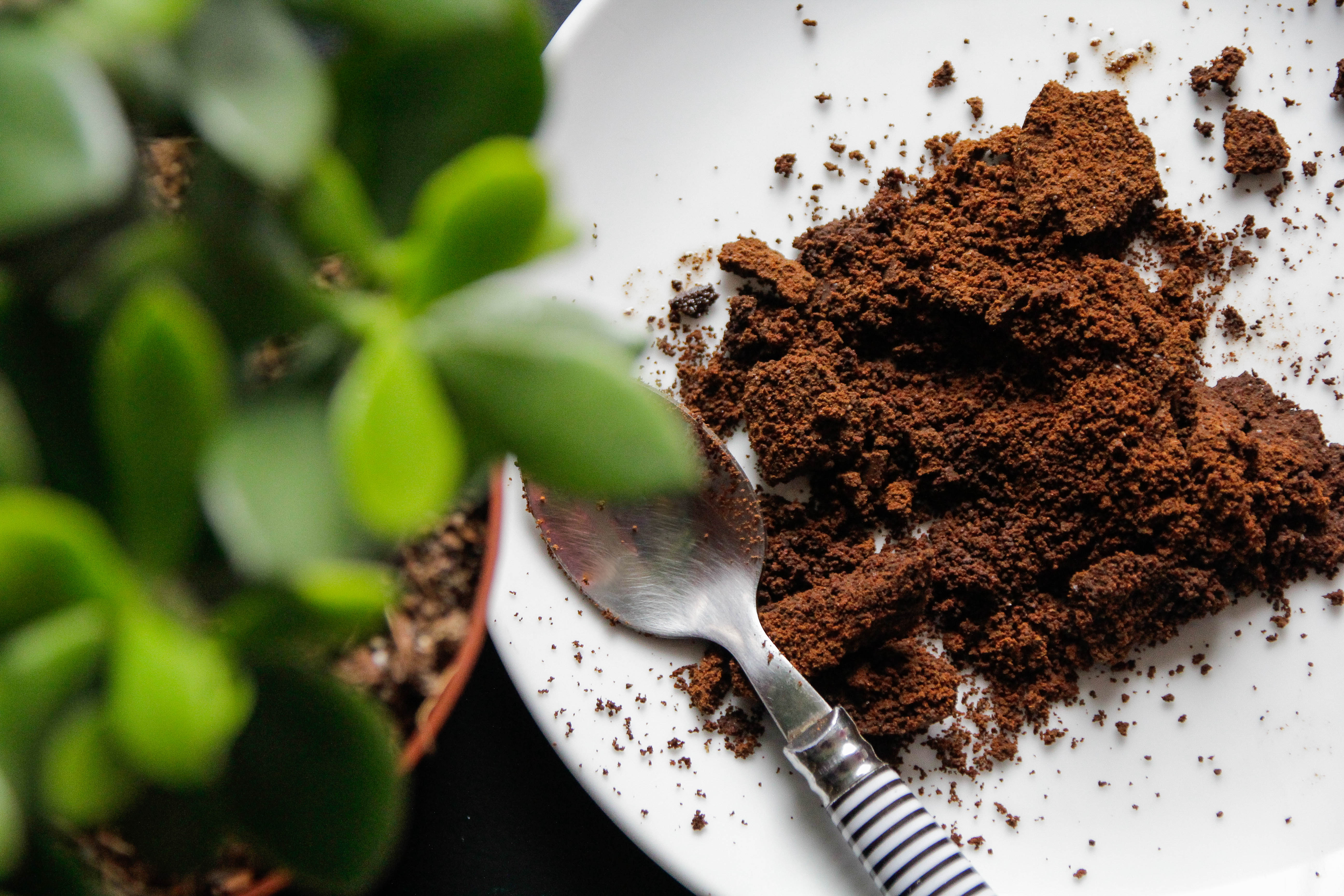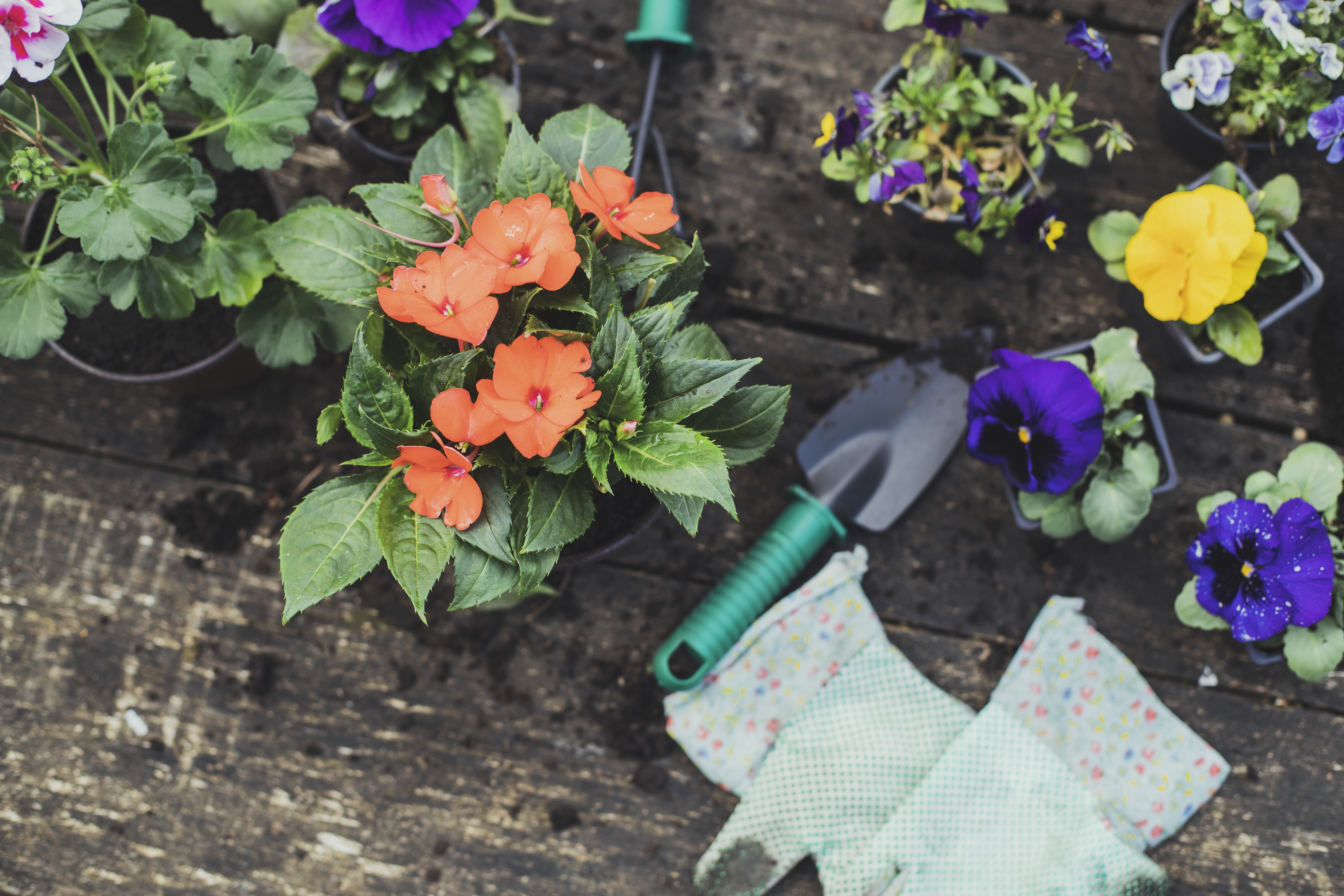Can you really use coffee grounds fertilize the plants in your backyard? Experts explain the pros, and the one big risk
Coffee grounds can do as much good for our plants as they do for a caffeine hit for us. Here's how to apply them properly for best results


The powers of caffeine are praised for their effects on the human body, but did you know that coffee can do wonders for plants in our backyard, too? That's right, it's time to stop throwing the ground bi-product of those now ubiquitous coffee machines away. Instead, you can use them to boost the growth of your garden.
We're not talking about the caffeine hit that you rely on first thing in the morning. Rich in nutrients such as nitrogen, potassium, and phosphorous, coffee grounds act as a natural fertilizer for your plants, giving them a boost of organic supplements to promote better health. It's not as easy as simply pouring your coffee residue over your garden or chucking your grounds onto the soil, however. You'll need to know how to apply them properly, and which plants to steer clear of.
To explain everything you need to know about using coffee grounds in your backyard, we've enlisted the help of some expert gardeners who share their advice below.
Why are coffee grounds good for plants?

Coffee grounds are somewhat of a wonder ingredient when it comes to your modern garden. Not only do they act as a fertilizer, providing essential nutrients needed for plant growth, but they can improve soil structure and water retention, too.
'They will also increase the soil's acidity, benefiting certain plants,' explains Reese L Robins, gardening expert at Just Pure Gardening. 'However, you will need a significant amount of coffee grounds in order to actually change the structure of the soil or increase soil pH,' he adds.
Which plants are they best for?
'Coffee grounds are particularly beneficial for plants that prefer acidic soil, such as azaleas, rhododendrons, camellias, and blueberries,' explains Lina Cowley, gardener and blogger at Trimmed Roots. 'They can also be used to help improve the health of roses, hydrangeas, tomatoes, peppers, and other fruit-bearing plants.'
This is because coffee grounds have a slightly acidic pH, therefore benefitting plants that prefer a low, acidic soil. They'll also have more of an effect on plants rich in nutrients like nitrogen, phosphorus, and potassium as these are the main nutrients in coffee grounds.
The Livingetc newsletters are your inside source for what’s shaping interiors now - and what’s next. Discover trend forecasts, smart style ideas, and curated shopping inspiration that brings design to life. Subscribe today and stay ahead of the curve.
This does mean that there's a chance of making your soil too acidic if you use too many coffee grounds on naturally acidic soil. 'You should also avoid using too many coffee grounds on plants that prefer alkaline soil, as the acidity of the coffee grounds could harm them,' notes Reese. In particular, tomatoes, rosemary, and lavender are all especially susceptible to stunted growth if the soil is too acidic.
If your soil is already high in nitrogen, the extra boost from coffee grounds could also do more harm than good to your flower beds by causing a nutrient imbalance.
How to apply coffee grounds as a fertilizer
Using coffee grounds on your garden isn't simply a case of sprinkling them haphazardly wherever you please. There are a few different methods of application, and the right one for your backyard will depend on various different factors.
1. Sprinkle grounds directly onto soil

First off, the easiest way of using coffee grounds in your garden is to sprinkle them straight onto the soil. You'll need to make sure they're in a fine powder-like form, however, not in the big clumps you take directly from your coffee machine.
'One method is to sprinkle the coffee grounds directly onto the soil around the base of the plant,' says Reese. 'While established plants can handle these changes in the soil, seedlings might suffer, so it's best to avoid using the grounds on young plants.' It's best to avoid using them for container gardening too since the nursery plants we use in pots won't be as established as plants in a flower bed.
Before adding coffee grounds to your garden, it's also important to check the existing pH level of your soil. 'If the pH is already low (acidic), then you should use fewer coffee grounds or combine them with other organic materials,' says Lina. 'Additionally, it's a good idea to mix the coffee grounds into the top layer of soil and not bury them too deep, as this will help to keep the nitrogen levels balanced and prevent them from becoming too concentrated in one area.'
2. Add grounds to your compost
As Lina mentioned, if your soil is already quite acidic, it's recommended that you add grounds to your compost, mixing them with other organic materials. 'You can create a compost pile with coffee grounds and other organic materials such as leaves, grass clippings, and vegetable scraps,' she says. 'This mixture will gradually break down over time, creating a rich source of fertilizer for your plants.'
Using coffee grounds in this way reduces the risk of overfertilizing your plants by creating a more balanced, nutrient-rich formula for your soil. As Reese notes, 'While coffee grounds can certainly contribute to soil improvement, it's unlikely that they will be a magic solution on their own, so it's best to combine them with other organic materials.' Building a compost pile is pretty simple, and it's one of the best jobs to get your backyard ready for spring (but it will serve you year-round!)
3. Mix directly into soil

If you're in the early stages of your landscaping ideas or in the process of building raised beds, you can also mix coffee grounds directly into your soil by sprinkling them onto the topsoil and churning them in with a garden fork. This method is preferable as it allows for a more even distribution, but it's not easy to do if you already have established planted in your garden. Reese recommends doing this before the sowing season if you can.
4. Mix with water for a liquid fertilizer
Finally, you can also make a liquid fertilizer by mixing coffee grounds with water which you can incorporate into your watering regime. 'To do this, soak 1/4 cup of coffee grounds in 2 cups of water and let it steep for a day before straining out the solids and using the liquid to water your plants,' says Lina.
You can then add this liquid to your watering can to make sure you distribute the feed more evenly. (Early morning or late evening is the best time to water your garden to reduce water evaporation.)
4. Avoid overfertilizing

We've already touched upon the dangers of using too many coffee grounds in already acidic or nitrogen-rich soil, so you'll need to know how to avoid overfertilization.
'It's important to note that coffee grounds are not a complete fertilizer; they should be used in combination with other organic materials such as compost or manure to provide plants with the full range of nutrients they need,' urges Lina. 'Also, if you use too many coffee grounds, it can make the soil overly acidic and cause damage to your plants. It's therefore important that you use coffee grounds in moderation and monitor the pH level of your soil.'
5. Use coffee grounds to repel pests
On a more positive note, coffee grounds can actually help to repel pests from your garden, including slugs and snails. 'Coffee grounds also attract earthworms, which are beneficial for soil health,' Lina says. 'When worms break down the organic matter in the soil, it helps to aerate the soil and increases water retention.'
The benefits of coffee grounds clearly outweigh any risks. Just make sure you check the pH balance of your soil and use the grounds in moderation to avoid the risk of fertilization and ensure you have the healthiest plants possible.

Lilith Hudson is a freelance writer and regular contributor to Livingetc. She holds an MA in Magazine Journalism from City, University of London, and has written for various titles including Homes & Gardens, House Beautiful, Advnture, the Saturday Times Magazine, Evening Standard, DJ Mag, Metro, and The Simple Things Magazine.
Prior to going freelance, Lilith was the News and Trends Editor at Livingetc. It was a role that helped her develop a keen eye for spotting all the latest micro-trends, interior hacks, and viral decor must-haves you need in your home. With a constant ear to the ground on the design scene, she's ahead of the curve when it comes to the latest color that's sweeping interiors or the hot new style to decorate our homes.